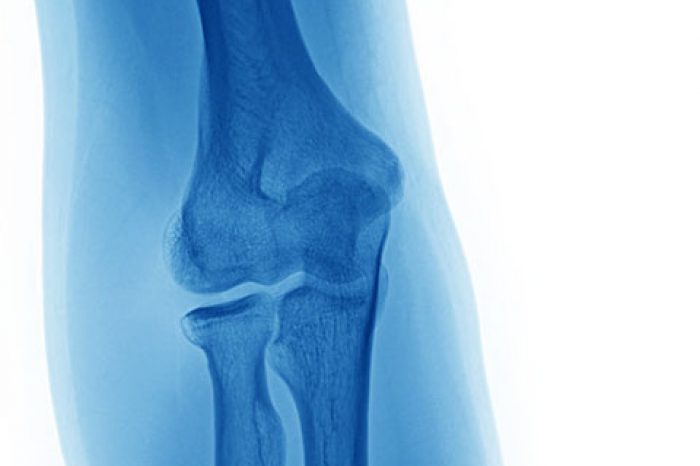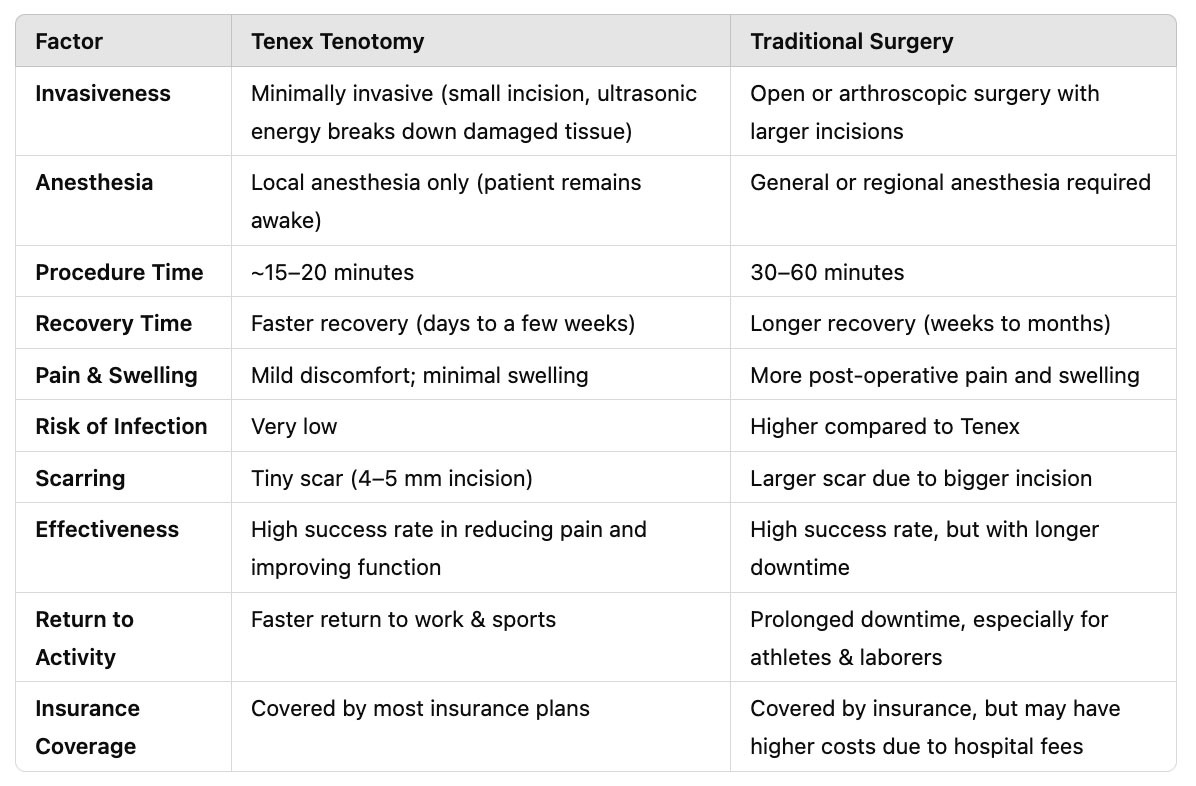

Lateral epicondylitis, commonly known as tennis elbow, is a painful condition affecting individuals, from athletes to manual laborers. Repetitive strain on the tendons of the elbow can lead to microtears and degeneration. Traditionally, patients who fail conservative treatments such as physical therapy, bracing, and corticosteroid injections may require surgical intervention. However, advancements in minimally invasive procedures, like tenotomy with Tenex, have emerged as an alternative. In this post, we review an article from the Cleveland Clinic that compares outcomes after Tenex with traditional surgical tenotomy, analyzing their effectiveness, recovery time and risk of complications.
Tenex is cutting device used to perform minimally invasive tenotomy procedures under ultrasound guidance. The Tenex device is designed to cut and remove damaged tendon tissue by inserting the device into the affected area through a tiny incision, breaking down and suctioning out the degenerated tissue while preserving healthy structures. This method is designed to accelerate healing and reduce post-procedure pain compared to open surgery [Altahawi et al, 2021].
A traditional surgical tenotomy makes a larger incision to access the tendon. The typical size of the surgical incision for an open tenotomy is 2 to 3 cm. This incision size allows adequate exposure for the manual excision of the damaged tissue, and sometimes reattaching or repairing the tendon [Wolf, 2023; Leppilahti et al, 2001]. Traditional surgical approaches can be performed as either open or arthroscopic surgery.
A recent study by Altahawi et al. comparing an ultrasound guided tenotomy using the Tenex TX-1 device to a traditional open surgical tenotomy for lateral epicondylitis. The findings indicate that both procedures effectively reduced pain and improved function, but the Tenex procedure offered several advantages, including:
One of the biggest advantages of Tenex over surgery is the recovery timeline.
While both procedures have risks, Tenex is generally associated with fewer complications [Altahawi et al, 2021]:

For many patients, Tenex offers a promising alternative to surgical
tenotomy. With faster recovery, lower risk of complications, and
comparable long-term outcomes [Altahawi et al, 2021]. Learn more at:
(781) 591-7855
20 Walnut St
Suite 14
Wellesley MA 02481
Adductor longus selective tenotomy is a modern surgical treatment for chronic groin pain that offers faster recovery and better outcomes than traditional full release surgery. The adductor longus, an inner thigh
Read MoreDiscover how ultrasound helps diagnose plantar fat pad atrophy, a leading cause of ball-of-foot pain. Learn about symptoms, thickness cutoffs, and why early detection matters for relief.
Read More